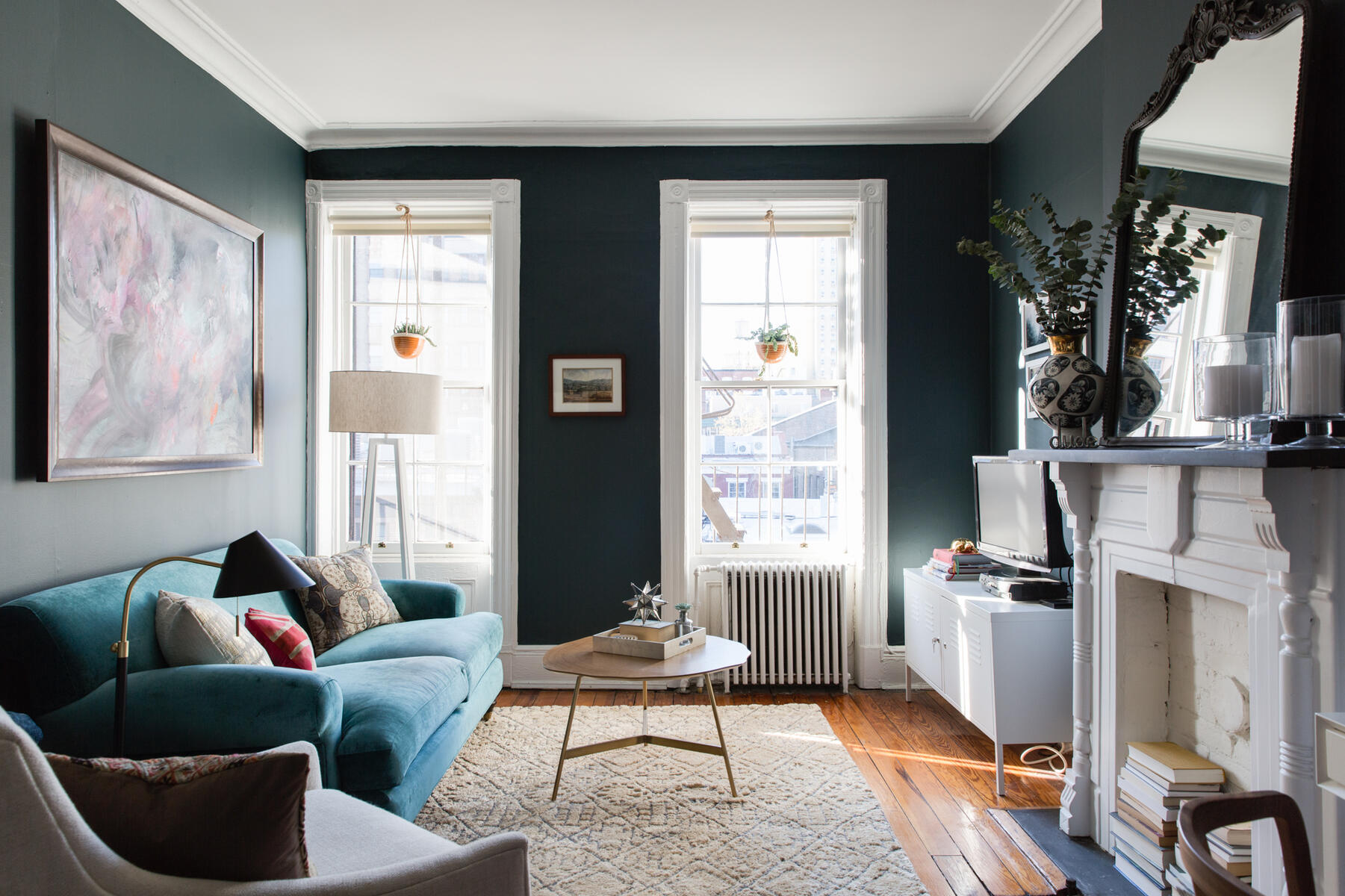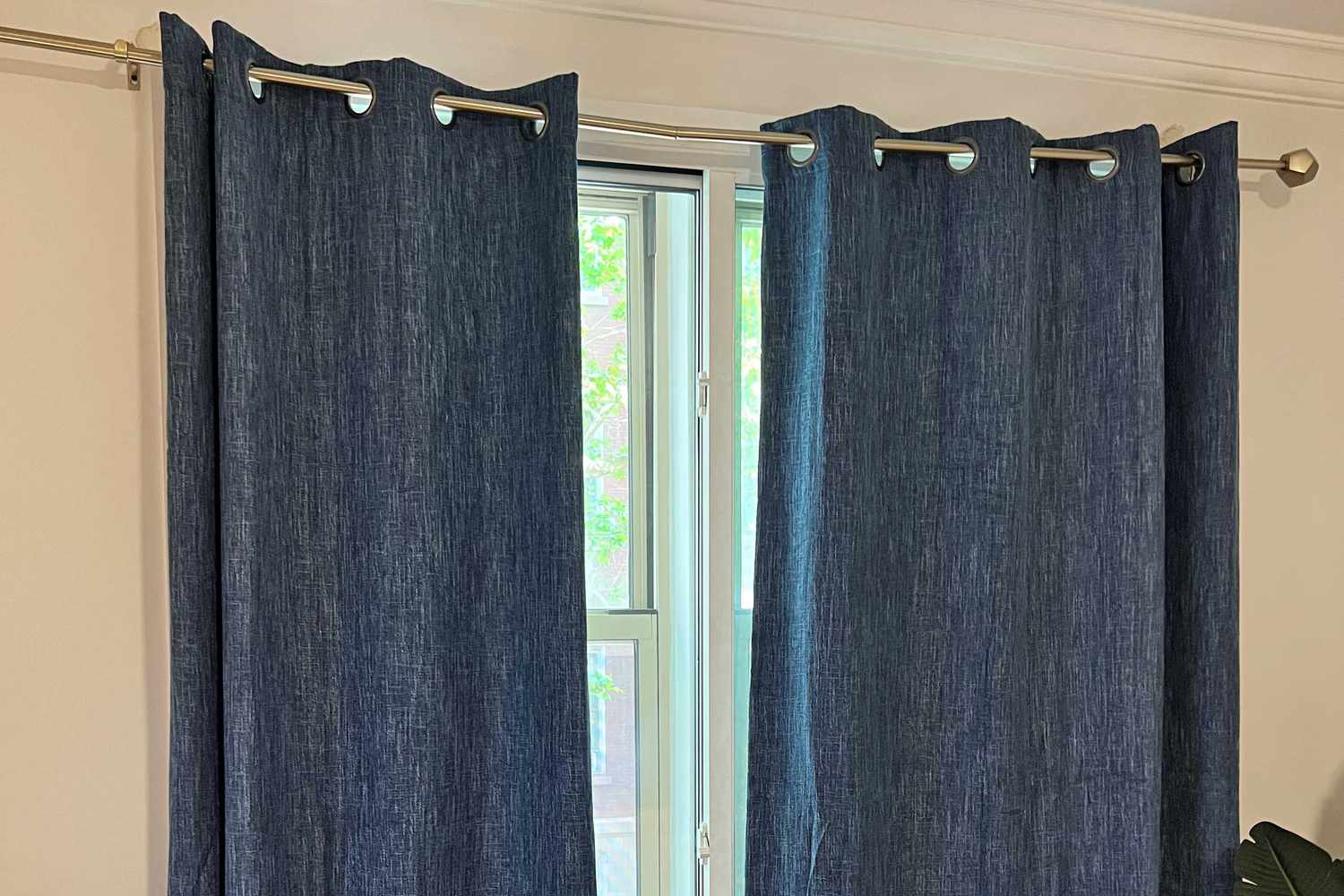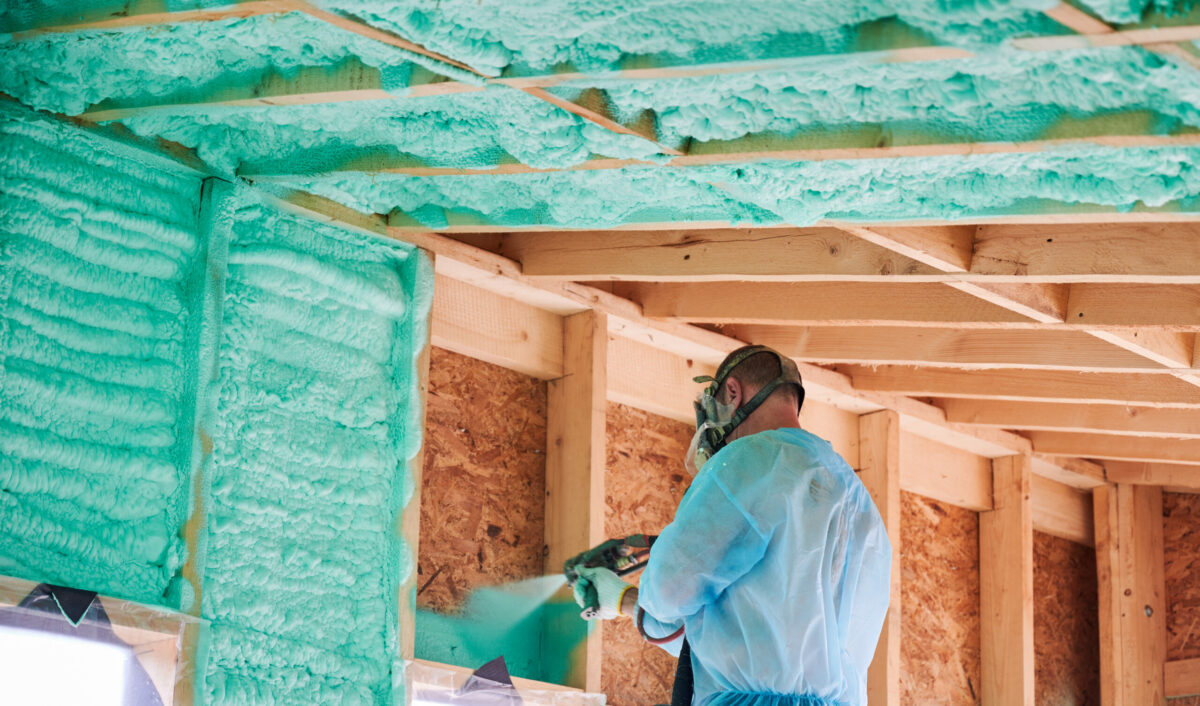Introduction
Welcome to our guide on how to create a noise cancelling room. In today’s fast-paced and noisy world, finding solace and tranquility can sometimes be a challenge. Whether you work from home, enjoy peaceful relaxation, or need a quiet space for recording audio or video, having a noise cancelling room can make a world of difference.
In this article, we will explore the various steps and techniques to transform a regular room into a sanctuary of silence. We will discuss everything from assessing the noise problem to soundproofing the walls, floor, and ceiling, and even adding sound-absorbing materials and furniture to further enhance the noise reduction. By the end, you will have a comprehensive understanding of how to create your own noise cancelling room.
Why is this important, you may ask? A noise cancelling room provides a range of benefits. It allows you to focus on tasks that require concentration, such as work or study, without being distracted by external noise. It also provides a peaceful environment for relaxation and meditation, allowing you to escape from the hustle and bustle of everyday life.
Moreover, a noise cancelling room is especially valuable for content creators who require a quiet space for recording audio or video. Whether you are a podcaster, musician, or YouTuber, having a dedicated space where noise interference is minimized can greatly enhance the quality of your recordings.
By having a noise cancelling room, you can say goodbye to the frustrations and distractions caused by outside noise. You will be able to enjoy peace and quiet, boosting your productivity, creativity, and overall well-being.
In the following sections, we will delve into the specifics of creating a noise cancelling room. So, let’s get started and embark on this journey to transform a regular room into a haven of tranquility!
Why would you need a noise cancelling room?
Imagine trying to concentrate on an important task, study for an exam, or simply relax after a long day, only to be constantly disrupted by the sound of traffic, barking dogs, or noisy neighbors. In such situations, a noise cancelling room becomes a valuable asset.
One of the primary reasons you might need a noise cancelling room is to enhance your focus and productivity. External noise can be incredibly distracting, making it challenging to concentrate on work or study. By creating a dedicated space where noise can be minimized, you can significantly improve your ability to focus and get things done efficiently.
A noise cancelling room is also essential for those who seek a peaceful and tranquil environment. It provides a sanctuary where you can escape the chaos and stress of everyday life. Whether you want to meditate, practice yoga, or simply unwind, a noise cancelling room can help create a serene atmosphere conducive to relaxation and rejuvenation.
Content creators, such as podcasters, musicians, or YouTubers, can also greatly benefit from having a noise cancelling room. Recording high-quality audio or video requires a quiet space free from external noise interference. By eliminating unwanted sounds, you can produce professional-grade content without any distractions or interruptions.
Furthermore, a noise cancelling room can be beneficial for individuals with specific sensory needs. People with sensory processing disorders or heightened sensitivities to noise can find relief in creating a controlled environment where the level of sound can be regulated. This can contribute to reducing stress and promoting a sense of calmness.
Lastly, a noise cancelling room can serve as a barrier against noisy activities happening in and around your home. It can help maintain privacy and prevent noise disturbances from spreading to other parts of the house. This can be particularly valuable for those who live in busy urban areas or in close proximity to neighbors.
In summary, a noise cancelling room can provide a multitude of benefits, including improved focus, enhanced relaxation, professional-quality recordings, sensory relief, and increased privacy. Whether you need a quiet space for work, study, meditation, or content creation, creating a noise cancelling room can greatly enhance your quality of life.
Assessing the noise problem
Before embarking on the journey of creating a noise cancelling room, it is essential to assess the existing noise problem in your space. This step will help you understand the sources of noise and identify the areas that require the most attention.
Begin by identifying the primary sources of noise that affect your room. It could be external factors such as traffic, construction, or noisy neighbors, or internal factors like appliances, HVAC systems, or footsteps from rooms above. Take note of the duration and frequency of these noise sources to determine their impact on your daily activities.
Next, evaluate the current sound insulation and acoustics of the room. Listen for any echoes or reverberation that might be present. Pay attention to any gaps or cracks in doors, windows, or walls that could serve as pathways for sound to seep into the space. Consider the layout and positioning of furniture, as they can either absorb or reflect sound waves.
It is also important to take into account the noise exposure guidelines recommended for specific activities. For instance, if you plan to use the room for recording audio, you will need a higher level of noise reduction compared to a room intended for meditation or relaxation.
Additionally, consider the budget and time constraints you have for creating a noise cancelling room. This will help you prioritize the improvements and techniques you choose to implement.
By carefully assessing the noise problem and understanding its nature and impact, you will be better equipped to tackle the specific challenges and create effective solutions to eliminate or minimize the noise in your room.
Choosing the right location
When creating a noise cancelling room, selecting the right location within your home is a crucial step. The location can greatly affect the overall effectiveness of your noise reduction efforts. Here are some factors to consider when choosing the ideal room:
Noise Sources: Identify the primary sources of noise in your home and their proximity to the potential rooms. Opt for a room that is farthest away from these sources to minimize the amount of noise that can enter.
Size and Function: Consider the size and intended function of the room. If you plan on using the space for work, study, or recording, ensure it is large enough to accommodate the necessary equipment and furniture. If the room is too small, it may limit your ability to create effective soundproofing solutions.
Structural Integrity: Assess the structural integrity of the potential rooms. Rooms with solid construction, such as concrete or brick walls, provide better sound insulation compared to rooms with thin walls or hollow core doors. Ideally, choose a room with minimal structural weaknesses or openings that could allow noise to penetrate.
Accessibility: Consider the accessibility of the room. If you frequently use the noise cancelling room, ensure it is easily accessible and won’t require you to pass by noisy areas or disrupt other household members.
Natural Light: Examine the availability of natural light in the potential room. While it may not directly impact noise reduction, ample natural light can contribute to creating a pleasant and inviting environment.
Isolation: Evaluate the level of isolation the room offers. Select a room that is isolated from high-traffic areas, such as hallways or living rooms, to minimize the amount of noise created within the room itself.
Take time to assess your options and consider all these factors before finalizing the location for your noise cancelling room. Choosing the right room will lay a solid foundation for the success of your noise reduction efforts.
Soundproofing the walls
One of the key steps in creating a noise cancelling room is soundproofing the walls. Walls are the primary barriers between your space and the outside noise, so implementing effective soundproofing techniques can significantly reduce the incoming noise. Here are some methods to consider:
Adding Mass: Increasing the mass of the walls is an effective way to block noise. Consider using heavy materials like gypsum board or mass-loaded vinyl to add density to the walls. These materials help absorb and reflect soundwaves, preventing them from easily passing through.
Double Drywall: Installing an additional layer of drywall can also enhance soundproofing. Make sure to use a sound-dampening drywall product and apply it with resilient channel or sound isolation clips to minimize vibrations and noise transmission.
Insulation: Insulating the walls with soundproofing insulation, such as rock wool or fiberglass, can further improve noise reduction. This insulation absorbs soundwaves and prevents them from traveling through the walls.
Sealing: Seal any gaps, cracks, or air leaks in the walls. Use acoustic caulk or weatherstripping to seal around windows, outlets, and baseboards. This will prevent sound from infiltrating through these openings.
Decoupling: Implementing decoupling techniques can effectively isolate the walls from vibrations and airborne noise. Consider using resilient channels or sound isolation clips to create an air gap between the wall studs and the drywall. This helps disrupt the transmission of sound waves.
Soundproofing Paint: Apply a soundproofing paint or a mass-loaded vinyl barrier on the walls. These specialized paints contain sound-dampening materials that can help reduce noise transmission.
Soundproofing Wallpaper: Consider using soundproofing wallpaper in combination with other techniques to add an extra layer of noise reduction. Soundproof wallpapers are designed to absorb and block soundwaves.
Remember that the effectiveness of soundproofing techniques can vary depending on the specific noise problem and room conditions. It may be beneficial to combine multiple methods to achieve optimal results. Consulting a professional in soundproofing can also provide valuable insights specific to your situation.
By implementing these soundproofing measures, you can create a solid barrier against external noise and enhance the overall noise reduction capabilities of your room.
Soundproofing the floor and ceiling
When creating a noise cancelling room, it’s important to not only focus on soundproofing the walls but also pay attention to the floor and ceiling. Sound can easily travel through these surfaces, so implementing effective soundproofing techniques for the floor and ceiling can significantly enhance noise reduction. Here are some methods to consider:
Floor Soundproofing:
- Use carpet or rugs: Adding carpets or rugs to the floor can help absorb and dampen sound vibrations. Opt for thicker and denser materials to provide better noise insulation.
- Underlayments: Install sound-dampening underlayments beneath the flooring material. These underlayments help reduce impact noise, such as footsteps or furniture movement.
- Seal gaps: Make sure to seal any gaps or cracks in the floor, such as around baseboards or between floorboards. Use acoustic caulk or weatherstripping to prevent sound from entering or escaping.
- Float the floor: Consider creating a floating floor system by using a layer of resilient materials, such as rubber or cork, beneath the flooring material. This helps isolate and reduce the transmission of sound vibrations.
Ceiling Soundproofing:
- Add acoustic panels: Install acoustic panels on the ceiling to absorb sound waves and reduce echo and reverberation. These panels can be made of sound-absorbing materials like foam or fabric-covered fiberglass.
- Acoustic insulation: Use soundproofing insulation in the ceiling cavity to enhance noise reduction. Materials like mineral wool or fiberglass batts can help absorb and block sound transmission.
- Resilient channels: Attach resilient channels to the ceiling joists or beams and then secure the drywall to them. This decoupling technique helps reduce the transfer of vibrations and soundwaves.
- Soundproofing paint or wallpaper: Apply a soundproofing paint or wallpaper on the ceiling to further enhance noise reduction. These specialized products contain sound-dampening materials that can help block sound transmission.
Remember to assess the specific noise problems in your space and choose the appropriate soundproofing techniques accordingly. It may be beneficial to combine multiple methods to achieve the desired level of noise reduction. Consult with professionals if needed to ensure optimal results.
By soundproofing both the floor and ceiling, you will create a more complete noise cancelling environment, minimizing the impact of external noise and enhancing the overall tranquility of your room.
Sealing windows and doors
When creating a noise cancelling room, it’s crucial to address potential weak points where sound can easily enter or escape, such as windows and doors. Properly sealing these openings can significantly enhance noise reduction. Here are some methods to consider:
Windows:
- Weatherstripping: Apply weatherstripping around the window frames to create a tight seal. Foam or rubber weatherstripping works well to prevent noise leakage.
- Window Inserts: Consider using window inserts made of soundproofing materials like laminated glass or acrylic. These inserts fit inside the window frame and provide an additional layer of noise insulation.
- Heavy Curtains: Hang thick, heavy curtains or drapes over the windows. These curtains help absorb sound and add an extra barrier against noise penetration.
- Window Sealant: Apply an acoustic sealant around the window frame to seal any gaps or cracks. This sealant helps block sound transmission through these openings.
Doors:
- Weatherstripping: Install weatherstripping around the door frame to create a tight seal. Use a combination of adhesive-backed foam tape and sweep or threshold seals to reduce noise leakage.
- Door Sweep: Install a door sweep at the bottom of the door to seal the gap between the door and the floor. This helps block sound transmission through that opening.
- Door Sealant: Apply an acoustic door sealant to fill any cracks or gaps around the door. This sealant helps prevent sound from seeping in or out through these areas.
- Solid Core Doors: Consider replacing hollow core doors with solid core doors. Solid doors offer better sound insulation due to their denser construction.
Properly sealing windows and doors is essential for creating an effective noise cancelling room. The combination of weatherstripping, window inserts, heavy curtains, and door seals will help minimize noise infiltration and maximize noise reduction within the room.
Assess the specific noise concerns in your space and choose the appropriate sealing methods accordingly. It may be beneficial to combine multiple techniques to achieve more comprehensive soundproofing. Consulting with professionals can provide valuable advice tailored to your specific needs.
By properly sealing windows and doors, you can create a tighter and more soundproof room, allowing for a quieter and more peaceful environment inside.
Installing sound-absorbing materials
When creating a noise cancelling room, incorporating sound-absorbing materials is a crucial step to enhance the overall acoustic environment. These materials help reduce echoes, reverberation, and unwanted reflections, resulting in improved sound quality and noise reduction. Here are some methods for installing sound-absorbing materials:
Acoustic Panels: Install acoustic panels on the walls, ceiling, or any exposed surfaces. These panels are specifically designed to absorb sound waves and reduce echo. They are available in various sizes, shapes, and colors, allowing you to customize the aesthetics of your noise cancelling room.
Bass Traps: Place bass traps in the corners of the room, as low-frequency sounds tend to accumulate in these areas. Bass traps help absorb and control low-frequency sound waves, reducing resonances and improving overall sound clarity.
Soundproof Curtains: Hang soundproof curtains or drapes over windows or as room dividers. These curtains are made of dense, noise-absorbing materials that help reduce outside noise and control sound reflections within the room.
Acoustic Insulation: Fill wall cavities, ceiling voids, and floors with acoustic insulation. Materials such as rock wool or fiberglass batts can effectively absorb soundwaves and prevent sound transmission through these surfaces.
Soundproof Wallpaper: Use soundproof wallpaper with sound-absorbing properties. This wallpaper has special fibers or foam layers that help dampen sound and improve overall noise reduction.
Carpet or Area Rugs: Lay down carpet or area rugs on the floor. These soft, dense materials help absorb sound and prevent sound reflections from hard surfaces, such as hardwood or tile floors.
Furniture and Decor: Incorporate furniture pieces and decorative elements that have sound-absorbing properties. Items like upholstered chairs, bookshelves filled with books, or curtains made of sound-dampening fabrics can contribute to reducing noise levels and creating a quieter environment.
When installing sound-absorbing materials, consider the size and layout of your room, as well as the specific noise concerns you are addressing. Strategic placement of these materials can help target problematic areas and optimize noise reduction.
Keep in mind that while sound-absorbing materials can significantly reduce noise within the room, they may not block noise from entering or escaping through windows, doors, or walls. It’s important to combine sound-absorbing techniques with proper soundproofing methods for comprehensive noise cancellation.
By incorporating sound-absorbing materials, you can create a more acoustically balanced and comfortable noise cancelling room, enhancing both the auditory experience and the overall tranquility of the space.
Using sound masking techniques
In addition to soundproofing and absorbing unwanted noise, using sound masking techniques can further enhance the effectiveness of your noise cancelling room. These techniques involve introducing pleasant and continuous background sounds to mask or disguise unwanted noises. Here are some methods to consider:
White Noise Machines: White noise machines emit a consistent noise that covers up other sounds. They are designed to create a soothing and continuous background noise that helps mask unwanted sounds. These machines often have adjustable volume and tone settings to suit individual preferences.
Nature Sounds: Play nature sounds, such as gentle rain, ocean waves, or birdsong. These natural sounds can create a calming ambiance and help divert attention away from disruptive noises. There are various apps and websites available that offer a wide range of nature soundtracks.
Background Music: Play soft and instrumental background music to provide a pleasant acoustic environment. Choose instrumental or ambient music without lyrics, as lyrics can sometimes be distracting. Opt for calm and relaxing genres like classical, jazz, or ambient electronic music.
Water Features: Incorporate indoor fountains or water features in your noise cancelling room. The soothing sound of flowing water can help mask disruptive noises and contribute to a serene atmosphere.
Sound Masking Systems: Consider installing sound masking systems that are specifically designed to distribute a controlled level of background noise throughout the room. These systems use speakers or emitters strategically placed in the ceiling to generate a uniform background sound that masks disruptive noises.
Smart Speakers/Virtual Assistants: Use smart speakers or virtual assistants to play ambient sounds or white noise. These devices often have built-in sound options that can be easily customized to suit your preferences.
Experiment with different sound masking techniques to find the one that works best for your noise cancelling room. It’s important to balance the masking sounds with the desired level of quietness, ensuring that the background noise isn’t overwhelming or distracting.
Remember that sound masking techniques are most effective when combined with soundproofing and absorbing methods. By utilizing both techniques, you can create a more comprehensive and effective noise cancelling environment.
Using sound masking techniques can contribute to a more serene and relaxing space, where unwanted noises are effectively disguised and replaced with more soothing and pleasant sounds.
Adding furniture and decor for noise reduction
When creating a noise cancelling room, strategically selecting and arranging furniture and decor can contribute to further reducing noise levels and enhancing the overall acoustic environment. Here are some ways to optimize noise reduction through furniture and decor:
Upholstered Furniture: Choose furniture with upholstered surfaces, such as sofas, armchairs, or ottomans. The padding and fabric in these pieces naturally absorb sound, reducing echoes and reverberations in the room.
Bookshelves: Fill bookshelves with books, as well as other objects like decorative items or soft materials. The presence of books and other objects helps scatter sound waves and prevent them from bouncing off hard surfaces, thus reducing noise reflection.
Curtains and Draperies: Hang heavy, thick curtains or draperies made of sound-dampening fabrics over windows and walls. These textiles help absorb sound and reduce external noise penetration, as well as minimize sound reflections within the room.
Area Rugs or Carpets: Place area rugs or carpets on the floor. These soft materials help to absorb and dampen sound vibrations, preventing them from bouncing off hard flooring surfaces and reducing noise transmission.
Decorative Wall Hangings: Hang artwork, tapestries, or acoustic panels on the walls. These decorative pieces not only add visual appeal but also aid in absorbing sound and minimizing noise reflections in the room.
Plant Life: Incorporate plants into your noise cancelling room. Besides adding a touch of nature, plants can help absorb sound and reduce background noise. Choose plants with dense foliage, such as ferns or tall potted plants, to maximize their noise reduction properties.
Soft Textiles: Use soft textiles like pillows, throws, or cushioned furniture to add extra layers of sound absorption. These textiles help to reduce noise reverberation and make the space more cozy and comfortable.
Room Dividers and Acoustic Panels: Place room dividers or acoustic panels strategically to create separate areas within the room. These dividers and panels can help block sound from traveling between spaces, providing further noise isolation.
By strategically incorporating furniture and decor that aid in noise reduction, you can create a more acoustically balanced and pleasant environment in your noise cancelling room. Experiment with different placements and arrangements to achieve optimal noise reduction while maintaining a visually appealing and comfortable space.
Remember that while these furniture and decor choices can contribute to noise reduction, they should also align with your personal style and preferences. Combining these elements with other soundproofing and sound-absorbing methods will result in a more comprehensive and effective noise cancelling room.
Conclusion
Creating a noise cancelling room is a rewarding endeavor that allows you to enjoy a peaceful and tranquil environment, free from the distractions of external noise. By implementing soundproofing techniques, installing sound-absorbing materials, and using sound masking methods, you can significantly enhance the effectiveness of your noise reduction efforts.
Assessing the noise problem, choosing the right location, and soundproofing the walls, floor, and ceiling are crucial foundational steps. By addressing these key areas, you create a solid barrier against external noise and minimize noise transmission within the room.
Sealing windows and doors helps prevent sound leakage, ensuring that your noise cancelling room remains peaceful and undisturbed. Installing sound-absorbing materials, such as acoustic panels, curtains, and furniture, further enhance the acoustic environment by reducing echoes, reverberation, and unwanted reflections.
Lastly, utilizing sound masking techniques, such as white noise machines, nature sounds, or background music, adds an extra layer of noise mitigation by masking unwanted sounds with pleasant and continuous background noise.
Remember that creating a noise cancelling room is a process that requires careful consideration of your specific noise concerns and preferences. Each step and technique discussed plays a role in achieving a more serene and quiet space.
Whether you need a dedicated space for work, study, relaxation, or content creation, a noise cancelling room can significantly enhance your focus, productivity, and well-being. It allows you to escape from the distractions of the outside world and create an environment conducive to your specific needs.
By combining the strategies and techniques outlined in this guide, you can transform an ordinary room into a haven of tranquility— a place where you can think, create, and unwind without the interference of external noise. So, start implementing these steps, unleash your creativity, and design your own personal noise cancelling sanctuary today.

























